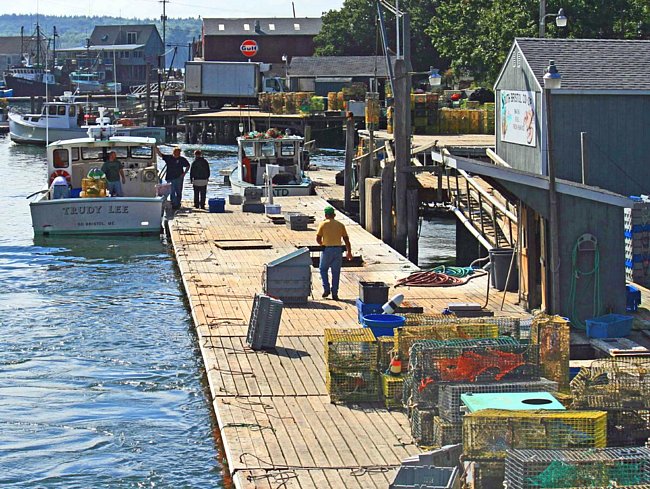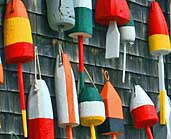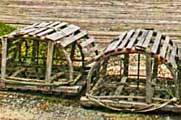|
Scenic USA - Maine South Bristol Harbor |

| Photos by Jack Ryan Jack Ryan Photography |
It may be hard to believe, but during America's Colonial Period lobster was considered poverty food, served to prisoners and indentured servants. Sick of lobster, the servants rebelled and eventually obtained new contracts stating lobster meals would be limited to no more than three days a week. During this early period, four and five pound lobsters were considered small. By the mid 1800s, the canning industry exploited Maine's abundant American lobster. In just 20 years the lobster population was decimated, and eventually canneries accepted half pounders for processing.
Sick of lobster, the servants rebelled and eventually obtained new contracts stating lobster meals would be limited to no more than three days a week. During this early period, four and five pound lobsters were considered small. By the mid 1800s, the canning industry exploited Maine's abundant American lobster. In just 20 years the lobster population was decimated, and eventually canneries accepted half pounders for processing.
Today, Maine's crustacean harvest is big, with value nearing 200 million dollars per year. The state's Department of Marine Resources enforces all laws and regulations concerning its fisheries today, including strict rules on lobster catches. Lobster harvesters must be familiar with all aspects of the business, including federal permits, trap limits, lobster management areas, and invasive  species studies. Plenty of controls are in place to ensure a healthy lobster population.
species studies. Plenty of controls are in place to ensure a healthy lobster population.
Here, tied-up at the South Bristol Harbor, a modern lobster boat is gearing up for a run to set their traps. Synonymous with Maine lobstering, at one time colorful wooden buoys marked the owner's traps. Unchanged for over a century, the wooden lath lobster pot measured four feet long, 2-foot in width, 18 inches in height and built in a semi-cylindrical form. Today's modern wire traps, styrofoam buoys and power boats, all clearly marked with license numbers, quickly replaced the nostalgic lobstering scene on nearly every village dock.
Area Map

|
Additional Area Attractions |
|
Copyright © 2023 Benjamin Prepelka
All Rights Reserved
